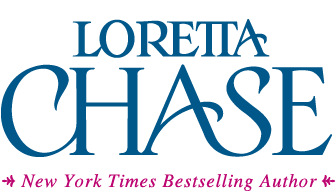Almack’s was THE night club for the elite. A group of aristocratic women, the patronesses, gave vouchers for entry to only a chosen few. These amounted to about 400-500 attending the Wednesday night assemblies. You’ll find many articles online, but be aware that a good deal of information, especially about the patronesses, is based on books written long after Regency (e.g., in the Victorian era) mainly by men. You’ll encounter some inaccuracies as well as some rather misogynistic gossip.
The Regent’s Park Zoo still exists although it’s quite different from the place Lady Alice would have known. The Yale Center for British Art has online a beautiful collection of watercolor images of the place in its early days.
Kensington used to be a western suburb of London. It was very much a rural area, and the northern part (which includes Notting Hill) was largely undeveloped at the time of my story. There were prosperous farms as well as the wasteland that was home to the notorious piggeries and potteries. The Bridge Inn is one of several fictional establishments I created here.
The Lovedon Arms, as explained in the notes at the end of My Inconvenient Duke, did exist, but not under this name. It was the White Horse, the White Hart, and the Holland Arms, depending on the source I consulted. It stood on the corner of the road leading to Holland House, a beautiful Jacobean mansion that was badly bombed during WWII. In Don’t Tempt Me, I’d given it to my fictional duke. But for some reason, instead of using his name, I used that of the hero the short story, “Lord Lovedon’s Duel.” Not the first mistake I’ve ever made . . .
The Colosseum, as promised in my notes, I’m giving this one its own post, but I’m including here a picture of the outside.
Blackwood’s house in Brighton is based on Marlborough House, on the Steine, Brighton. Unfortunately, I’ve been unable to find a public domain picture of it so far, but here’s one at Flickr.
The Haymarket Theatre still exists. Like so many other structures, it’s changed over the years.
Tollstone Academy for Girls. If you’ve read Nicholas Nickleby or Jane Eyre, you’ll be familiar with the notorious Yorkshire Schools. I modeled mine after the Cowan Bridge Clergy Daughters’ School, which the Brontes attended.
If you are trying to visualize the scene at Hatchett’s White Horse Cellar, when Jonesy vanishes, this Cruikshank image lets you stand in its doorway, to get an idea of the anarchy.
Gunter’s Tea Shop. Unfortunately, to date, nobody has turned up an illustration of this place, which is rather sad, considering how long it was in business and the role it plays in so many Regency-era stories. For this reason, though, one finds numerous articles about the confectioner’s online, like this one and this one.
The Fox and Hare is a fictional location. This illustration from Nicholas Nickleby gives a sense of the inn’s interior. “Boxes” or “box compartments” are what we in the U.S. call “booths.”
SOURCES
Illustration at top: “The Piccadilly Nuisance! Dedicated to the worthy, acting magistrates of the district”, G Cruikshank, published 29 December 1818. © The Trustees of the British Museum. Shared under a Creative Commons Attribution-NonCommercial-ShareAlike 4.0 International (CC BY-NC-SA 4.0) licence. (The same holds for the other images from the British Museum.)
Highest life in London. Tom & Jerry sporting a toe among the Corinthians at Almacks in the west NYPL. Date Issued 1821-05-01. Cruikshank, Robert; Cruikshank, George. New York Public Library.
Zoological Gardens. Regent's Park. Six Views in the Zoological Gardens, Regent's Park. George Scharf. View inside the zoo in Regent's Park, showing the aviary, with a crowd of visitors; pelicans in foreground at left, caged birds behind, enclosure with lake at right. © The Trustees of the British Museum
Portobello Farm, illustration from Old & New London Vol 5
Illustration from Mrs. Mary Bayly’s Ragged Homes and How to Mend Them (1860)
Holland Arms, from Leigh Hunt’s The Old Court Suburb; or, Memorials of Kensington, regal, critical, & anecdotical 1903 ed.
The Colosseum, Regent's Park c 1830 printed 1846. © The Trustees of the British Museum.
New Haymarket Theatre, opened July 4th, 1821 [graphic]. Folger Shakespeare Library Digital Collections.
Lowood illustration from Life and works of Charlotte Brontë and her sisters v. 1 (Jane Eyre)1875
If you’d like to listen to me talk about My Inconvenient Duke with my good friend, historical romance author Caroline Linden, our chat at the Ashland Public Library is here on YouTube. Yes, it did get recorded after all.














